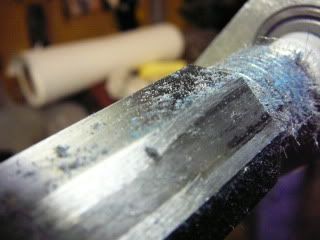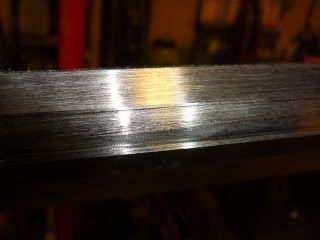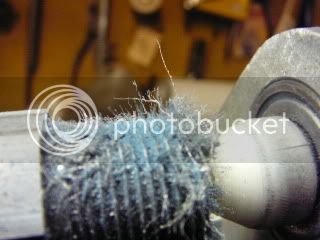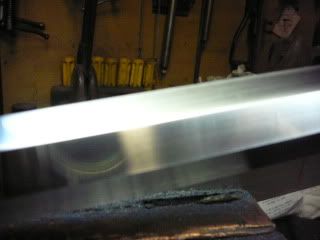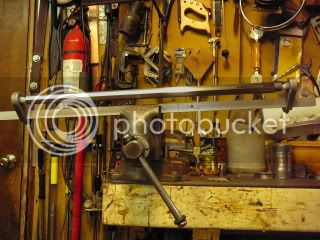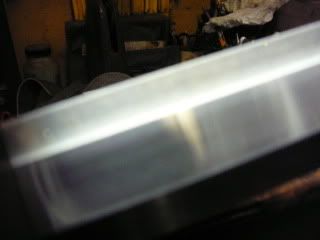This is one of those things that while simple and pretty straight forward, the exact method often varies from builder to builder.
It's also a process that is so simple yet incredibly hard to describe with the written word alone.
Also ideas of how smooth you get the barrel and what's accettable, and what's not, will vary to builder to builder. it depends on their style.
How I do it. Since I have worked on old cars since I was a kid and like most kids I had no money, I draw file a barrel like I true a cylinder head or cylinder block.
On a gun barrel the first thing I do is take a sharpie or majik marker and I draw a wavy line on the flat from edge to edge, from breech to muzzle. Now you could cover the whole flat if you wish but I've found a squiggly line is sufficient and saves time and ink.
Of course you need the barrel secure in a padded vise or something like the contraption mentioned above.
For the sake of sanity, I'm not going to get into to detail about which hand holds what. I do most stuff left handed but tests show after my head injury, I'm really right handed.
I start at the breech. I hold the file flat against the flat. Taking special care to be square so I do not round the edges or corners of the flat. I hold the file with both hands, one on each side of the barrel.
I may not hold at a perfect 90 degree angle but it is pretty close. I make two motions when I file. I make as long a Stoke down the barrel as I can comfortably and at the same time l am pushing the file across the flat. I run out of reach and file at the same time. I reposition and go again. I make sure I'm square. I keep an eye in my squiggly line and move on down the barrel to keep things even.
One thing you will find out is how uneven the barrel is. There will be high spots and low spots, humps and dips.
I'm not too concerned with scratches as a good clean file leaves a nice finish. Even if file marks are visible, in my opinion that's part of the charm.
Maybe I'm sentimental but the old masters left file marks, maybe a scratch here and there so I consider these marks made by the hand of man part of the charm of these guns.
I'll finish up with a fine Emory or sand paper backed. Use caution with the heavy grit papers because they can leave horrible scratches especially if they rip. I prefer a file for most of the work.





